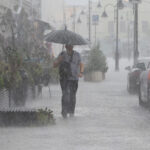The average rental price for apartments in the capital increased by 4.1% in July, according to an analysis from the service “Yandex Rent.”
Cities with the highest increase in apartment rental prices
The highest rise in housing costs, ranging from 4.6% to 8.5%, was observed in the following cities:
- Voronezh, up to 26 thousand rubles;
- Perm, up to 31 thousand rubles;
- Samara, up to 30 thousand rubles;
- Saint Petersburg, up to 51 thousand rubles.
Prices rose above the average level in Nizhny Novgorod—up to 35 thousand rubles (+2.7%)—and in Omsk, up to 25 thousand rubles (+2.7%). According to the service, the increase in rental prices was accompanied by a nearly 3% decrease in market supply.
In July, renters viewed apartment listings 8.4% more frequently than in June. As a result, more budget-friendly apartments were rented out faster, leading to an increase in the average rental price in most major cities.
Cities where rental prices dropped or saw minimal growth
A decrease in rental prices occurred only in Kazan, where the cost of renting an apartment fell by 4.7% to 44 thousand rubles. In other cities, prices either remained unchanged or increased only slightly.
For example, rates rose in the range of 0.9% to 1.7% in:
- Yekaterinburg, up to 35 thousand rubles;
- Ufa, up to 26 thousand rubles;
- Chelyabinsk, up to 25 thousand rubles;
- Krasnoyarsk, up to 25 thousand rubles.
At the same time, since the beginning of 2025, long-term rentals for one-bedroom apartments have become cheaper in most major cities. For example, Omsk, Chelyabinsk, and Krasnoyarsk saw the most significant rate drops.
Voronezh
Voronezh is a historic city in southwestern Russia, founded in 1586 as a fortress to protect the southern borders of the Russian state. It played a key role in the development of the Russian Navy under Peter the Great, who built ships here in the late 17th century. Today, Voronezh is a cultural and industrial center, known for its universities, theaters, and landmarks like the Admiralty Church and the Monument to Peter the Great.
Perm
Perm is a major city in Russia, located on the banks of the Kama River near the Ural Mountains. Founded in 1723 as a factory settlement, it grew into an important industrial and cultural hub, known for its mining, metallurgy, and arts. The city is also famous for its Permian geological period and the Perm-36 Gulag museum, which reflects its complex historical legacy.
Samara
Samara is a major city in southwestern Russia, situated on the Volga River. Founded in 1586 as a fortress to protect Russia’s southeastern borders, it later became a key trade and industrial center. Today, Samara is known for its aerospace industry, historic architecture, and vibrant cultural scene, including museums, theaters, and the iconic Stalin-era bunker.
Saint Petersburg
Saint Petersburg, founded in 1703 by Tsar Peter the Great, is Russia’s second-largest city and a cultural hub renowned for its imperial architecture, canals, and art collections. Once the capital of the Russian Empire for over two centuries, it is home to landmarks like the Hermitage Museum, the Winter Palace, and the Church of the Savior on Spilled Blood. The city played a pivotal role in Russian history, surviving the Siege of Leningrad during World War II and remaining a symbol of resilience and artistic heritage.
Nizhny Novgorod
Nizhny Novgorod, founded in 1221 by Prince Yuri II of Vladimir, is one of Russia’s oldest and most historic cities. Located at the confluence of the Volga and Oka rivers, it became a major trade and cultural hub, later known for its iconic 16th-century Kremlin. Today, it blends rich history with modern development, serving as a key economic and tourist center in western Russia.
Omsk
Omsk is a major city in southwestern Siberia, Russia, founded in 1716 as a fortress to protect the expanding Russian frontier. It later became a key administrative and military center, as well as a place of exile for political prisoners, including the writer Fyodor Dostoevsky in the 19th century. Today, Omsk is known for its historical architecture, cultural institutions, and role as an industrial and transportation hub in the region.
Kazan
Kazan is the capital of Tatarstan, Russia, and a historic city where European and Asian cultures blend. Founded over 1,000 years ago, it is home to the UNESCO-listed Kazan Kremlin, a fortress containing the Kul Sharif Mosque and the Annunciation Cathedral, symbolizing the coexistence of Islam and Orthodox Christianity. Known as the “Third Capital of Russia,” Kazan is a major cultural, educational, and sports hub, hosting events like the 2013 Universiade and 2018 FIFA World Cup.
Yekaterinburg
Yekaterinburg, founded in 1723 by Tsar Peter the Great, is one of Russia’s largest cities and a major cultural and industrial hub in the Ural Mountains. It is historically significant as the site where the last Russian Tsar, Nicholas II, and his family were executed in 1918. Today, the city is known for its vibrant arts scene, Soviet-era architecture, and landmarks like the Church on the Blood, built on the Romanovs’ execution site.






